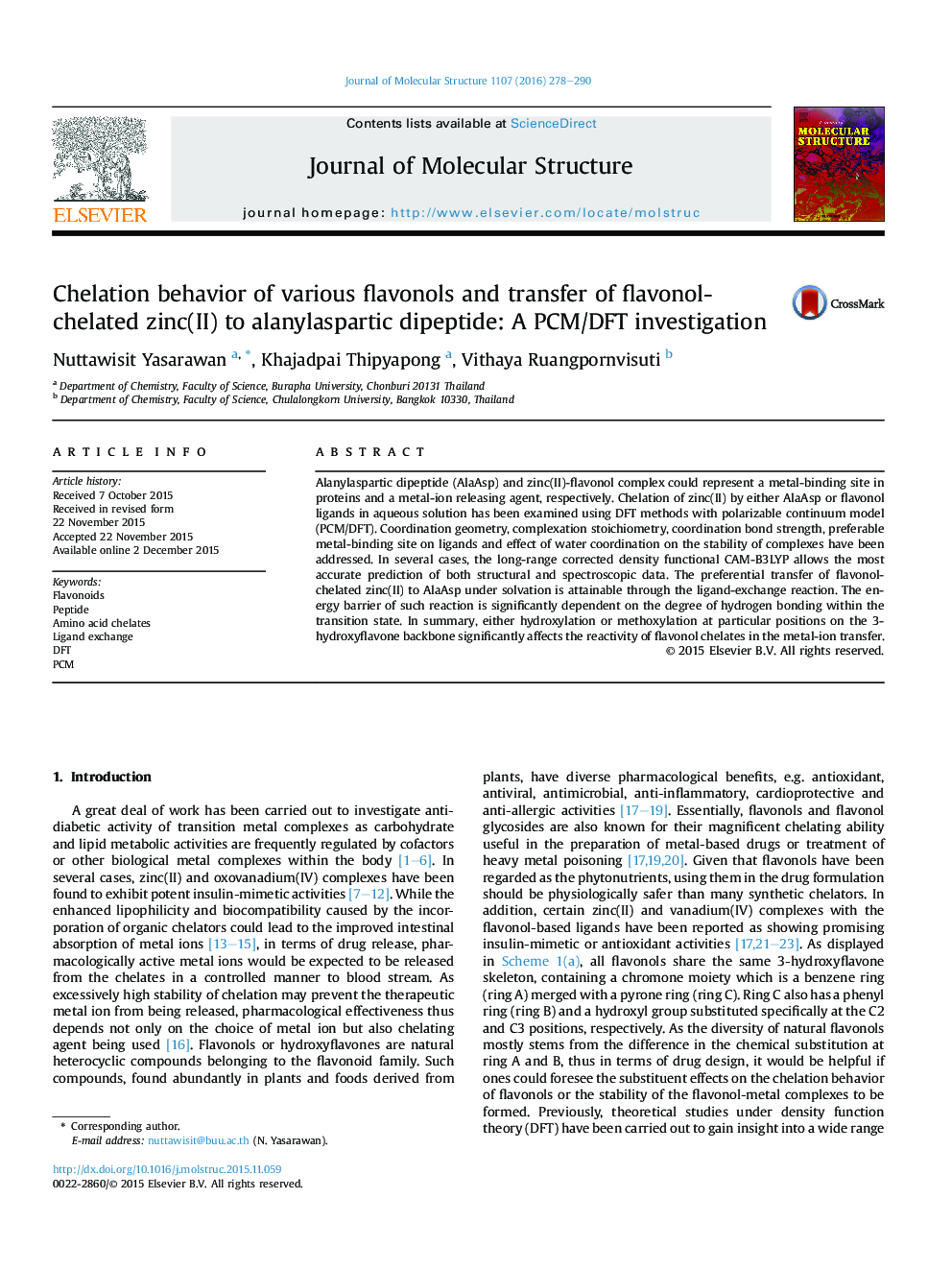| کد مقاله | کد نشریه | سال انتشار | مقاله انگلیسی | نسخه تمام متن |
|---|---|---|---|---|
| 1401454 | 1501710 | 2016 | 13 صفحه PDF | دانلود رایگان |

• PCM/DFT study on chelation of flavonols and AlaAsp was performed.
• Water plays a key role as stabilizing co-ligand in complexation.
• Activation energies of ligand-exchange reactions were determined.
• Substituents on ligand affect the reactivity of complex.
Alanylaspartic dipeptide (AlaAsp) and zinc(II)-flavonol complex could represent a metal-binding site in proteins and a metal-ion releasing agent, respectively. Chelation of zinc(II) by either AlaAsp or flavonol ligands in aqueous solution has been examined using DFT methods with polarizable continuum model (PCM/DFT). Coordination geometry, complexation stoichiometry, coordination bond strength, preferable metal-binding site on ligands and effect of water coordination on the stability of complexes have been addressed. In several cases, the long-range corrected density functional CAM-B3LYP allows the most accurate prediction of both structural and spectroscopic data. The preferential transfer of flavonol-chelated zinc(II) to AlaAsp under solvation is attainable through the ligand-exchange reaction. The energy barrier of such reaction is significantly dependent on the degree of hydrogen bonding within the transition state. In summary, either hydroxylation or methoxylation at particular positions on the 3-hydroxyflavone backbone significantly affects the reactivity of flavonol chelates in the metal-ion transfer.
Figure optionsDownload as PowerPoint slide
Journal: Journal of Molecular Structure - Volume 1107, 5 March 2016, Pages 278–290